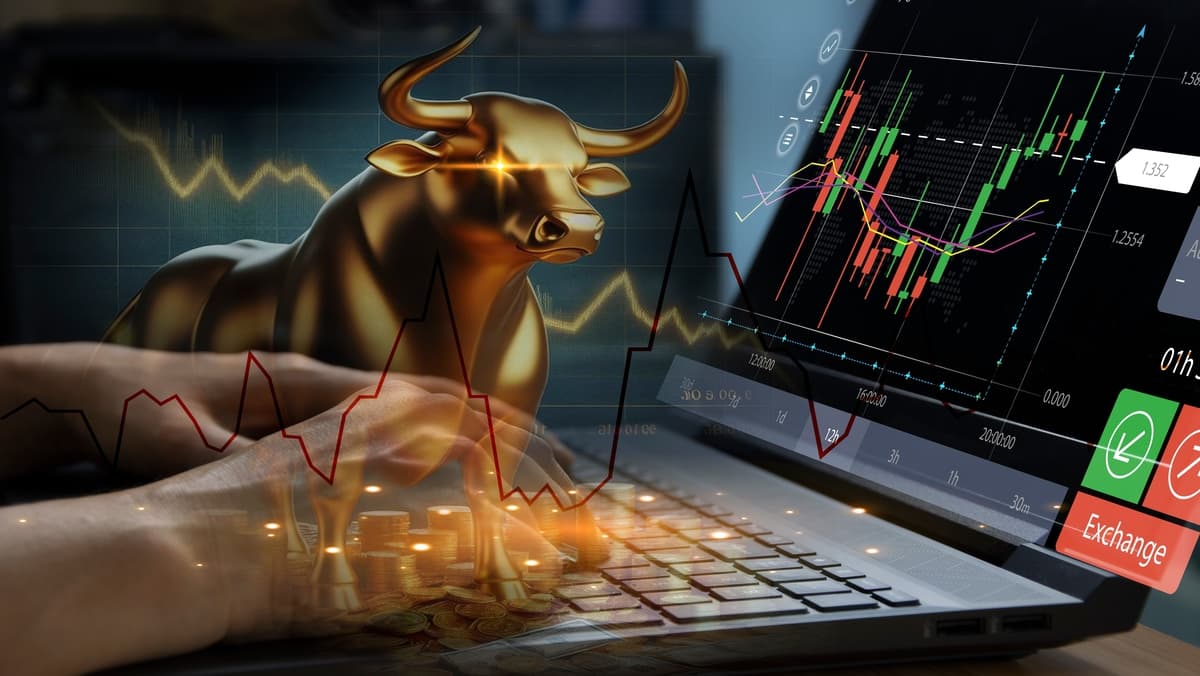Tuesday Aug 13 2024 08:23

5 min

New traders might have heard investors or analysts use the term "bullish" when talking about a stock, sector, or the economy, and it might have left you puzzled.
In simple terms, being "bullish" means an investor expects that a stock or the overall market will rise. On the flip side, "bearish" refers to the belief that a stock or market will decline or underperform. Investors who are bullish are often called "bulls," while those who are bearish are known as "bears." Keep in mind, though, that the term "bullish" can have different implications depending on whether someone is considering short-term or long-term trends.
The term "bullish" can also apply to the broader stock market or the economy as a whole. For instance, if an economist is described as having a bullish outlook on the stock market, it means they expect the market to rise. Similarly, having a bullish view of the U.S. economy suggests that one anticipates strong GDP growth and other positive economic indicators. Just like with individual stocks, bullish perspectives on the broader market or economy can be focused on short-term or long-term expectations.
A "bull market" refers to a period when the overall stock market is on a consistent upward trend, often lasting several years. For example, the period from March 2009 to March 2020 is considered a bull market.
Conversely, a "bear market" is characterized by a decline in stock prices, typically marked by a 20% drop from recent highs. Bear markets are usually shorter in duration compared to bull markets, lasting from a few months to one or two years. For instance, the bear market from October 2007 to March 2009 exemplifies this phenomenon.
A market relies on both bulls and bears to operate effectively. If everyone were constantly bullish and unwilling to sell at any price, there would be no transactions taking place.
Bulls are looking to buy securities because they believe these assets will appreciate in value. In contrast, bears anticipate better returns elsewhere and choose to sell some or all of their holdings to capitalize on other opportunities.
It's worth noting you can go from bullish to bearish depending on several factors. Most straightforward, a security could change in price to the point where fewer bulls see the potential for outsized gains -- thus becoming increasingly bearish. Likewise, the stock could drop in price to the point where more bears don't think it will continue to drop.

●Buy Early in a Bull Run
Identifying the start of a bull run can be challenging, but one indicator is observing the third touch of a price action on a trend line (for example, as shown in charts with higher highs and lower lows). If the trend appears to be heading upward, this is often a good opportunity to enter a long position or invest in physical assets.
●Avoid Lingering on Losses
Planning your exit strategy in advance can help mitigate losses. For instance, you might decide to close your position or sell your assets if the price drops below a key trend line. Alternatively, if you believe the bull run has peaked and expect a decline—whether sharp, gradual, temporary, or sustained—you might consider short-selling to capitalize on the anticipated downturn.
●Take Profits at Regular Intervals
Securing profits at consistent intervals can help you lock in gains and potentially increase your overall trading profits.
●Follow the Market Momentum
The saying "the trend is your friend" highlights the importance of aligning with the market's direction. Even in a bull market, where prices generally rise, there will be fluctuations with
both increases and decreases. This means it's possible to face losses on a long position or gain from a short position. Therefore, it's crucial to thoroughly analyze the bull trend and act promptly to make informed decisions.
●Buy Call Options
A common strategy during a bull market is purchasing call options. These contracts give you the right, but not the obligation, to buy an asset at a specified price before a set date. If you choose not to exercise the option, you only lose the premium paid for the call option.
When considering shares, indices, forex (foreign exchange) and commodities for trading and price predictions, remember that trading CFDs involves a significant degree of risk and could result in capital loss.
Past performance is not indicative of any future results. This information is provided for informative purposes only and should not be construed to be investment advice.